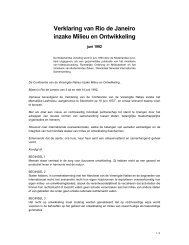long-term care use and supply in europe: projections for germany ...
long-term care use and supply in europe: projections for germany ...
long-term care use and supply in europe: projections for germany ...
Create successful ePaper yourself
Turn your PDF publications into a flip-book with our unique Google optimized e-Paper software.
LONG-TERM CARE USE AND SUPPLY IN EUROPE | 43<br />
Figure 4.2 Prevalence of residential <strong>care</strong> <strong>use</strong>, <strong>in</strong> Germany, the Netherl<strong>and</strong>s, Spa<strong>in</strong> <strong>and</strong> Pol<strong>and</strong>,<br />
2010-2060, DELAY scenario (% of total population aged 65 <strong>and</strong> over)<br />
10%<br />
9%<br />
8%<br />
7%<br />
6%<br />
5%<br />
4%<br />
3%<br />
2%<br />
1%<br />
0%<br />
2010 2015 2020 2025 2030 2035 2040 2045 2050 2055 2060<br />
DE NL ES PL<br />
Source: see Table 4.2.<br />
As is shown <strong>in</strong> Figure 4.3 to Figure 4.6, the projected numbers of residential <strong>care</strong> <strong>use</strong>rs are quite<br />
sensitive to alternative bio-demographic scenarios. In the four countries, projected numbers of<br />
residential <strong>care</strong> <strong>use</strong>rs are lowest under the CONST scenario. This scenario assumes that mortality rates<br />
would not decrease <strong>in</strong> future years, result<strong>in</strong>g <strong>in</strong> lower numbers of older persons <strong>and</strong>, hence, lower<br />
numbers of <strong>care</strong> <strong>use</strong>rs. Leav<strong>in</strong>g the 'optimistic' <strong>and</strong> not very realistic CONST scenario out of<br />
consideration, the projected numbers of residential <strong>care</strong> <strong>use</strong>rs still vary considerably <strong>in</strong> Germany. In the<br />
Netherl<strong>and</strong>s, Spa<strong>in</strong> <strong>and</strong> Pol<strong>and</strong>, <strong>projections</strong> are less sensitive to alternative assumptions about disability<br />
trends. This difference <strong>in</strong> sensibility to alternative disability <strong>projections</strong> is related to differences <strong>in</strong> the<br />
share of non-disabled residential <strong>care</strong> <strong>use</strong>rs <strong>and</strong> <strong>in</strong> the age-gradient of residential <strong>care</strong> <strong>use</strong>. In the four<br />
countries, the projected <strong>in</strong>crease <strong>in</strong> the number of residential <strong>care</strong> <strong>use</strong>rs between 2010 <strong>and</strong> 2060 is lowest<br />
under the BIOL scenario, DELAY comes next, followed by PREV <strong>and</strong> CHRON.<br />
For Germany, the projected <strong>in</strong>crease <strong>in</strong> the number of residential <strong>care</strong> <strong>use</strong>rs between 2010 <strong>and</strong> 2060<br />
ranges from 74% under the BIOL scenario to 153% under the CHRON scenario. For the Netherl<strong>and</strong>s the<br />
<strong>in</strong>crease ranges from 188% to 231 %, <strong>for</strong> Spa<strong>in</strong> from 159% to 168% <strong>and</strong> <strong>for</strong> Pol<strong>and</strong> from 130% to 176%<br />
(see Table A4.6, Table A4.9, Table A4.12 <strong>and</strong> Table A4.15 <strong>in</strong> Appendix).
















